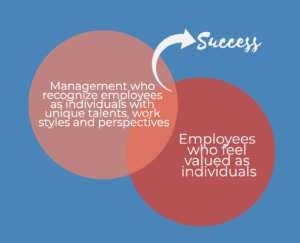“Bridging the generational gap in the workplace: How I learned to stop worrying and love working with the millennial generation” is an article written by Dr. Thanakorn Jiresevijinda at Cornell university. It was written for the Journal of communication in healthcare and published by Taylor & Francis group.
In Dr. Jiresevijinda’s 20 years of supervising medical students, he has received an unsettling and growing amount of complaints about the millennial generation. One could easily draw a conclusion that there exists a disconnect between Gen X and Gen Y. This problem encouraged him to explore new ways to create a more integrated work force that understands and accepts each other regardless of age difference. The purpose of his article is to offer the methods that he found to be helpful through his exploration. He admits in the article that he too has experienced frustration while educating the students from the younger generation. By stating this he levels the playing field as he explains that he understands the discontent that his colleagues have with Gen Y. He then continues his article by citing a sentence in a piece written by the prominent figure Chelsea Clinton. Her statement suggested that millennials are often portrayed as disinterested and selfish individuals, though the millennials that she has worked with do not fit that stereotype. He included this quote as it attests to the fact that the Millennial generation tends to have a bad reputation. This also helps persuade the audience to be more accepting of his suggestions as he shares a similar perspective with an influential figure. The author also builds up his argument by sharing his own personal experiences. Dr. Jiresevijinda speaks from both his experiences at work and the conversations he has had with his coworkers. Some of their frustration with the millennial group stemmed from increased technology use; different communication preferences; the students craving for feedback; and their preferred work like balance, which can be misconstrued as students being disinterested in learning. He was then able to identify positive traits from Gen Y and craft methods to remedy these problems. The positive traits that he identified included their tech savviness, confidence, and their ability to work well in a team environment.
The first suggestion that Dr. Jiresevijinda made was to focus on inclusiveness. He understands that in a social media driven world, millennials need to feel that their voice is heard. This has led him to listen more closely to his students without judgement and help them by asking pointed questions. He also allows them to work in groups as they often thrive better through student collaboration. Pre-class quizzes are given to ensure that everyone is engaged and keeping up with the pace of the class as a whole.
His second suggestion is that we must leverage social consciousness. The millennial generation is one that truly values having a positive impact on the world. They tend to be more accepting of diversity and progressive change. This observation led him to see the importance of framing the knowledge he gives his students in such a way that they can see the importance it has on improving society. He keeps this importance in the minds of the students by having them sign up for community service. The students worked alongside the professors and another medical organization to offer a free clinic for refugees seeking asylum in the United States.
His last suggestion is to include more technology in the curriculum. One way he suggested doing this is by incorporating fun and engaging games such as jeopardy to keep his students involved. He also finds it useful to use a smartphone app that is an audience-response system. I found this interesting as the students must stay engaged in the class because the context of the class is literally on their phones on which they must participate.
I find this text to be an important contribution to expanding our canon as every single sustainable organization will always be multigenerational. Though it is not often the first thing that comes to mind when we hear the term diversity, people in different generations have vastly different life experiences and are indeed quite diverse. Rapidly accelerating technological advances; Unforeseen world events; and new global challenges are among the factors that affect the overall behavior of a generation significantly. This inevitably leads to differences in the way that people of a generation view the world and interact with one another. Though this may present its own challenges, it is paramount that we learn to come together to create a synergistic environment at work. This can only be done by valuing each other’s differences. I found Dr. Jiresevijinda’s work to contain the wisdom that is crucial to solving our intergenerational struggles. One final source of valuable information about generational diversity can be found in the video link below. Keevin O’Rourke conducts a TED talk of which he speaks on the issue of generational diversity at work. One may be able to draw multiple parallels between the video and Dr. Jiresevijinda’s article. I found it intriguing how they both had similar suggestions to their respective audience even though one of them is Gen X and one is Gen Y. This gives hope that in the future our organizations will reap the benefits of a more accepting workforce
Link to the article and citiation
https://www.tandfonline.com/doi/full/10.1080/17538068.2018.1485830
Ted Talk to further explore intergenerational diversity in the workplace


